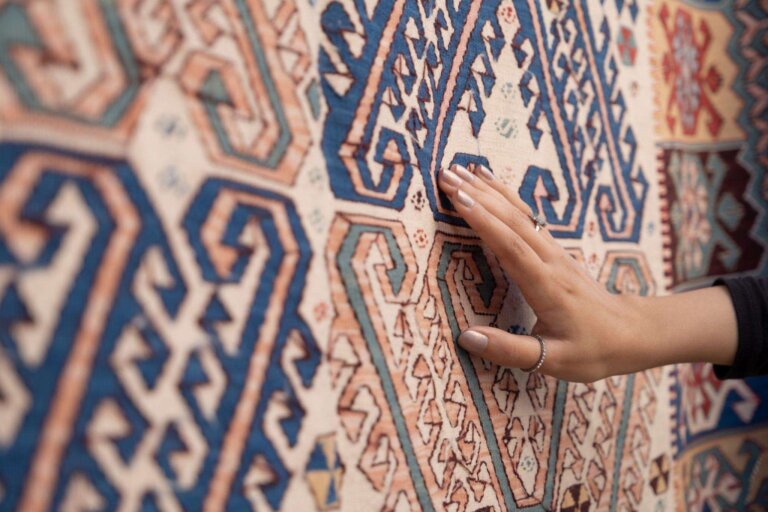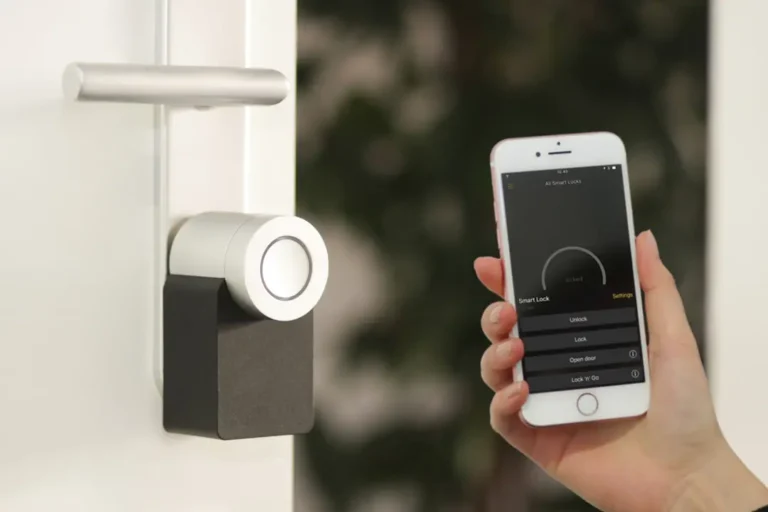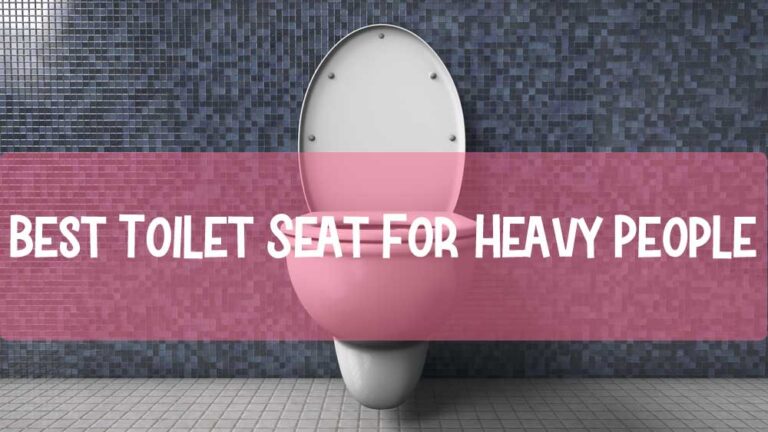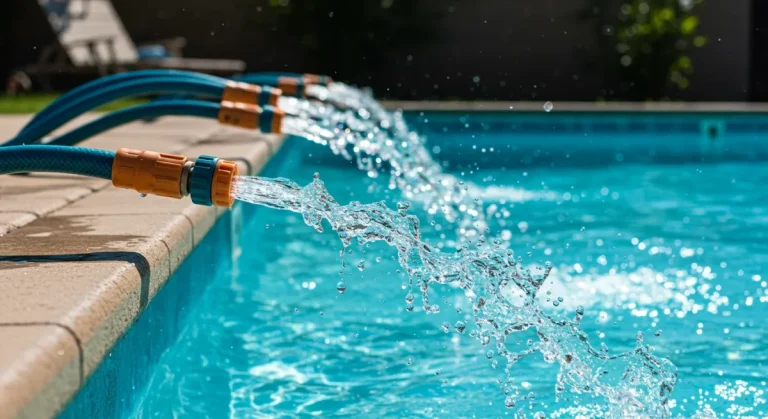How to Safely Remove Dried Glue from Vinyl Flooring

Wondering how to remove dried glue from your vinyl floor? The safest and most effective method is to start with heat. Gently warm the spot with a hairdryer for about 20-30 seconds to soften the adhesive, then carefully lift the glue away using the edge of a plastic scraper or an old credit card. For any sticky residue that remains, a cloth dampened with rubbing alcohol will typically clean it right up.
Whether it’s leftover Samad Bond from a DIY project or glue from new vinyl tiles, a stubborn stain can be frustrating. Seeing a hardened lump of glue on your beautiful floor can be frustrating, especially after a home repair or new installation. It often feels like a permanent blemish that could be damaged by aggressive scraping or harsh chemicals.
The good news is that the simple method above works for most common glue spills. This guide will expand on that technique and provide other proven solutions, from simple household items to stronger commercial removers, ensuring you can restore your vinyl plank flooring’s finish without causing any damage.
Before You Start: What Should You Know About Your Vinyl Floor?
Before you tackle that glue spot, a few moments of preparation can save you from a major headache. Taking these two simple steps will ensure you get a great result without damage.
Why Is a Spot Test So Important?
Your vinyl flooring is protected by a transparent top coat called a wear layer. While durable, this layer can be sensitive to certain chemicals or solvents. A spot test is your best defense against accidentally causing widespread discoloration or dulling the finish. Simply apply a tiny amount of your chosen cleaning solution to an inconspicuous area—like inside a closet or under a sofa—and wait a few minutes. Wipe it clean and check for any negative reaction. If the spot looks fine, you’re good to go.
What Tools and Safety Gear Will You Need?

Gathering your supplies beforehand makes the process quick and easy. For most methods, you will need:
- A plastic scraper, putty knife, or an old credit card. Crucially, never use a metal scraper, as it can easily gouge or permanently scratch your vinyl.
- A hairdryer to gently warm and soften dried glue.
- Soft, clean cloths (microfiber is ideal).
- Rubber gloves to protect your hands.
- Your chosen cleaning agent (e.g., rubbing alcohol, mineral spirits, or a commercial adhesive remover).
- A small bowl of warm, soapy water for final cleanup.
How Do You Remove Small Spots of Dried Glue With Household Items?
For most minor glue spills, you don’t need to run to the store. The best way to clean vinyl glue is to start with the gentlest methods, using items you likely already have at home. Always work from the mildest to the strongest solution.
Method 1: The Heat and Scrape Technique
This is the safest starting point for any type of hardened glue and is surprisingly effective.
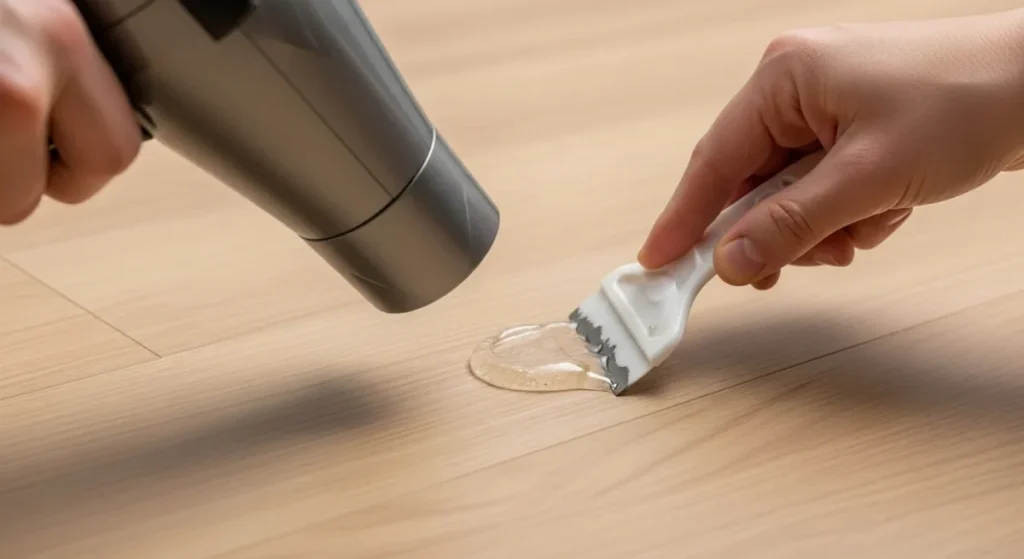
- Apply Gentle Heat: Hold a hairdryer a few inches away from the glue spot. Set it to low or medium heat and warm the area for 20-30 seconds to soften the dried glue. Be careful not to overheat the spot, as too much heat could potentially damage the vinyl’s finish.
- Scrape Carefully: Once the glue feels pliable and soft to the touch, take your plastic scraper. Holding it at a low angle, gently push under the edge of the glue to lift it off the surface. The goal is to lift it, not gouge the floor.
- Wipe and Repeat: Use a clean, damp cloth to wipe away any loose bits. For thicker, more stubborn glue on a vinyl surface, you may need to repeat the heating and scraping process a couple of times.
Method 2: Using Oil or Vinegar to Loosen Glue
If heat alone doesn’t conquer the spot, the properties of common kitchen liquids can help break down the adhesive.
- Choose Your Solution: Dab a small amount of mineral oil, baby oil, or a 50/50 mixture of white vinegar and warm water onto a clean cloth.
- Let it Dwell: Place the dampened cloth directly over the glue spot and let it sit for 15-20 minutes. This allows the solution to penetrate and weaken the adhesive’s bond.
- Wipe and Scrape: Remove the cloth and wipe the area firmly with a clean section of the cloth. The glue should be soft enough to come off. Use your plastic scraper for any remaining stubborn bits.
- Clean the Residue: This step is crucial. You must clean the area with a cloth dipped in warm, soapy water to remove any leftover oil or vinegar, which could make the floor slick or attract dirt.
Will Rubbing Alcohol Damage Vinyl Flooring When Removing Glue?
This is a common question, and the answer is reassuring. No, rubbing alcohol (isopropyl alcohol) is generally very safe for modern vinyl flooring and is excellent for dissolving that frustrating sticky residue on your vinyl floor. The key is to use it correctly.
- Dampen, Don’t Pour: Pour a small amount of rubbing alcohol onto a soft, clean cloth. Never pour it directly onto the floor, as it can seep between planks or tiles.
- Rub the Spot: Place the cloth on the residue and rub gently in a circular motion. You should feel the glue begin to dissolve and lift onto the cloth.
- Wipe Clean: Alcohol evaporates quickly, so the final cleanup is simple. Just wipe the area with a second cloth dampened with plain water to remove any final traces.
What Is the Best Vinyl Floor Adhesive Remover for Stubborn Glue?
When dealing with very old, cured flooring adhesive or a tough spot of construction glue, household remedies may not have sufficient power. In these cases, a commercial vinyl flooring glue remover is your most reliable option to dissolve glue on vinyl without endless scrubbing.
How to Choose a Commercial Glue Remover
The number one rule is to choose a product that is explicitly labeled as “safe for vinyl flooring” or “safe for resilient flooring.” Reading the label is non-negotiable, as the wrong chemical can strip the finish right off your floor. Look for these common types:
- Citrus-Based Removers: Products like Goo Gone are a popular first choice. They use the power of citrus oils to break down adhesives and are effective on a wide range of glues. They are generally low-fume and a great, safe adhesive remover for vinyl.
- Soy-Based Removers: These are another excellent, low-odor option that works by biodegrading the adhesive. They often require a longer dwell time, but are very effective and more environmentally friendly.
- Solvent-Based Removers: For the toughest jobs, a product like Decco Glue Remover, which contains other solvents, might be necessary. While highly effective, these require good ventilation, so be sure to open some windows.
- In Pakistan, you might not find specific brands like ‘Goo Gone’ everywhere. Instead, you can ask for a ‘vinyl-safe chemical remover’ at any large hardware store (like Metro or Carrefour) or your city’s paint market. Often, simple rubbing alcohol (spirit), which is available at any pharmacy for under 100 PKR, works very well for sticky residue.
How to Apply Commercial Removers Safely
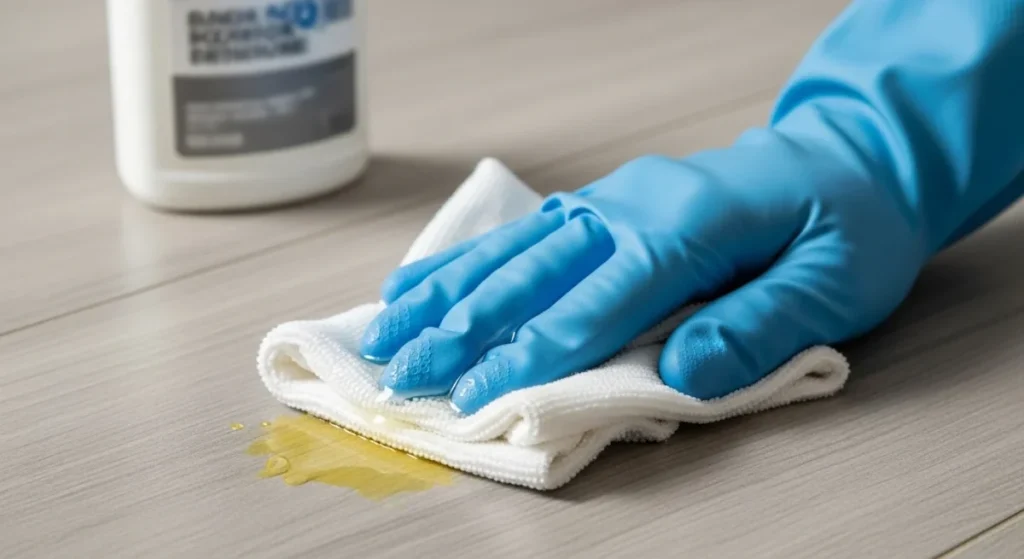
Using a chemical remover is simple and effective if you follow a safe process.
- Read the Manufacturer’s Directions: Every product is different. Always follow the specific instructions on the bottle for application, dwell time, and cleanup for the best results.
- Ventilate Your Space: Before you begin, open windows and doors to ensure fresh air is circulating, especially when using solvent-based products.
- Always Spot Test: We can’t stress this enough. Even if the product is marked as safe, test it on a hidden spot first to be 100% certain it won’t affect your floor’s color or finish.
- Apply and Wait: Put on your gloves. Apply a small amount of the remover to a clean cloth and place it over the glue. Let it sit for the recommended time (this could be anywhere from a few minutes to half an hour).
- Scrape and Wipe: Once the glue has softened into a gel-like substance, use your plastic scraper to gently lift it. Be careful with your technique to avoid creating marks. If you do make a scuff, you may need to learn how to fix scratches on luxury vinyl flooring.
- Neutralize and Clean: Follow the product’s instructions for cleanup. Most will require you to wipe the area with a cloth dampened with soap and water to remove any remaining chemical residue.
How Do You Remove Widespread Flooring Adhesive from a Subfloor?
If you’ve just pulled up old vinyl tiles and are now facing a floor full of sticky, black flooring adhesive, the job is bigger than just a spot clean. Your goal here is to create a smooth, clean surface, which is a critical first step if you’re getting ready for a new installation. In fact, a clean subfloor is the foundation of learning how to install vinyl plank flooring.
Is the Glue on a Concrete or Wood Subfloor?
The right approach depends heavily on your subfloor material, as each reacts differently to removal methods.
How to remove vinyl flooring glue from concrete
Concrete is very durable, so you can be more aggressive. For thick patches of adhesive, a long-handled floor scraper (sometimes called a “bully”) can remove the bulk of it mechanically. For the thin residue that remains, a chemical adhesive stripper or mastic remover designed for concrete is highly effective. Often, experts agree that using both a scraper and a chemical remover is the most effective way to get the job done properly.
How to remove vinyl flooring glue from wood
Wood subfloors are far more sensitive to moisture and chemicals. You must avoid oversaturating the wood, which can cause it to warp or swell. The best method is often a patient combination of a heat gun (used with care to avoid scorching) and a pull scraper. If you must use a chemical remover, do so sparingly in small, manageable sections, and scrape up the softened residue immediately.
A Note on Asbestos: When Should You Stop and Call a Professional?
Warning
This is the most critical safety advice in this guide. If your home was built before the 1980s, there is a significant chance that your old vinyl flooring or the black mastic adhesive underneath it contains asbestos.
Health authorities around the world, like the World Health Organization (WHO), agree that asbestos fibers are a serious inhalation hazard, asbestos fibers are a serious inhalation hazard and are known to cause severe respiratory diseases. These dangerous fibers are released into the air during activities like dry scraping, sanding, or chipping old adhesive. Health and safety experts confirm that these materials were common in residential construction for decades.
If your home is older, or if you see classic 9×9-inch tiles and thick black mastic, stop all work immediately. Do not scrape, sand, or disturb the material. Contact a certified asbestos abatement professional for testing and removal. The health risk is far too great to handle as a DIY project.
What Chemicals Should You Never Use to Clean Vinyl Floors?

Vinyl is a resilient material, but it’s not indestructible. Using the wrong cleaner can cause irreversible damage. It’s just as important to know what not to use to clean vinyl floors as it is to know which methods are safe.
Will Acetone or Nail Polish Remover Damage Vinyl?
Yes, absolutely. Acetone on vinyl flooring is a recipe for disaster. Acetone is a powerful solvent that will dissolve the protective wear layer on your planks or tiles, and can even melt the vinyl itself. This causes permanent discoloration, dull patches, and a soft, gummy texture. Keep all acetone-based products (including most nail polish removers) far away from your vinyl floors.
Are Bleach and Ammonia Safe for Vinyl?
No, these common household cleaners should also be avoided. Chlorine bleach is a harsh oxidant that can strip the color from your flooring, often leaving a permanent yellow stain. Ammonia and ammonia-based cleaners are highly alkaline and can degrade the floor’s finish over time, making it look dull and more susceptible to dirt and scratches. Flooring experts confirm that using a chemical that is too harsh for the material is a primary cause of permanent damage, using a chemical that is too harsh for the material is a primary cause of permanent damage.
How Can You Maintain Your Vinyl Floor After Glue Removal?
Once the stubborn glue is finally gone, a quick final cleanup will leave the spot looking perfect and blend it seamlessly with the rest of your flooring.
Cleaning the Area Post-Removal

This three-step process ensures no residue is left behind from your cleaning efforts:
- Wash: Gently wipe the treated area with a soft cloth dipped in warm water with a single drop of mild dish soap.
- Rinse: “Rinse” the spot by wiping it again with a new cloth dampened with only plain water. This removes any soap film.
- Dry: Dry the area completely with a clean, soft towel, especially in Pakistan’s humid weather. You can also use a fan to speed up the process and ensure no moisture is left behind. This prevents water spots and restores the floor’s natural sheen.
Tips to Prevent Future Glue Stains
A little prevention goes a long way.
- Protect Your Work Area: When doing crafts or home repairs, always lay down a drop cloth, cardboard, or newspaper first.
- Clean Spills Immediately: It takes only a few seconds to wipe up wet glue with a damp paper towel. It takes much longer to remove that same glue once it has cured.
- Use the Right Tools: For projects involving a hot glue gun, place a silicone mat underneath your work to catch any drips.
Frequently Asked Questions (FAQ)
Does WD-40 remove vinyl glue?
Yes, WD-40 can remove vinyl glue in some cases. Its solvents can break down certain adhesives. However, it leaves behind a significant oily residue that is slippery and will attract dirt. If you choose to use it, you must thoroughly clean the area afterward with soap and water to remove the film. For this reason, rubbing alcohol is usually a better first choice.
Can I use baking soda to clean my vinyl floors?
It’s not recommended. Baking soda is a mild abrasive. While it might seem gentle, scrubbing your floor with it can create microscopic scratches that will dull the protective wear layer over time. For regular cleaning, always opt for a pH-neutral cleaner specifically designed for vinyl.
How do you soften hardened glue?
The best and safest way to soften hardened glue on a vinyl surface is with gentle heat. A hairdryer on a low or medium setting, held several inches from the floor for about 20-30 seconds, is the perfect tool. This makes the glue pliable and significantly easier to lift off with a plastic scraper without damaging the floor.
Conclusion: Keep Your Floors Looking Flawless
Removing a dried, stubborn glue stain from your vinyl floor might seem daunting, but it rarely requires extreme measures. By following the steps outlined in this guide—starting with the gentlest methods like heat and scraping, moving to mild household solutions, and always performing a spot test—you can tackle almost any glue problem without risking your floor’s beautiful finish.
The key is patience and using the right technique for the job. With these safe and effective methods in your home maintenance toolkit, you can confidently handle any future spills and keep your vinyl floors looking pristine for years to come.



